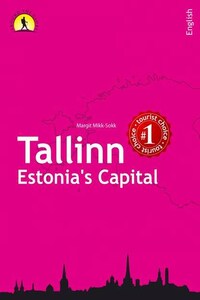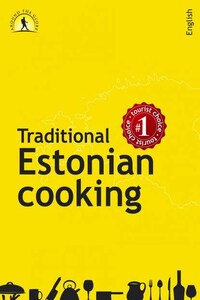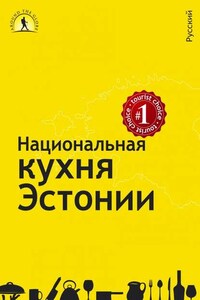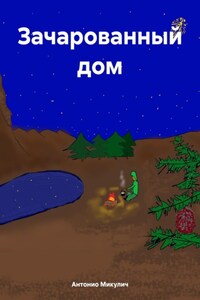Tallinn – Estonia’s capital Tallinn, the capital of Estonia, is one of the most charming medieval capitals in Europe. When you arrive by sea, the Old Town of Tallinn arises from the sea like a fairy tale town. The network of streets and boarders of building plots developed in the 13th−15th centuries as well as all the most important public and religious buildings erected during this period have preserved their medievaal appearance and help you to travel back in time. Cobblestone streets, narrow passageways, imposing churches, old storehouses and the town wall radiate a special aura that you cannot experience anywhere else.
Spectacular Hanseatic merchants’ houses and former salt and flour stores from the golden age of the Hanseatic League have been preserved. Turn your eyes upwards because on almost every street you can find some Hanseatic merchants houses that have attic shutters with hoisting hooks used to haul flour bags.
The medieval Old Town of Tallinn is unique in the world because it is complete and it has belonged to the UNESCO world heritage list since 1997.
In addition to the special atmosphere, there are many galleries, boutiques, museums, restaurants and cafés in the Old Town.
Close to the Old Town is the business heart of Tallinn with tall buildings and the attractively renovated Rotermanni Quarter. Nowhere else can you simultaneously take in a view of architectural pieces that span eight centuries. The Rotermanni Quarter has gained attention in the world as a gem of unique modern architecture. Here you can see an interesting symbiosis of old factories and modern architecture. The renovated quarter contains shops and boutiques, restaurants and offices.
A big difference compared to ohter European capitals is the smallness of Tallinn, i.e. art centres, theatres, shops, restaurants and hotels are close to each other and usually you can get from one point to another simply by foot. Those who have a longer drive ahead can trust the public transportation or taxies.
Population: 1.3 million
Area: 45,227 km²
Monetary unit: euro
Capital: Tallinn
Official language: Estonian
Number of islands: 1,521
Largest islands: Saaremaa 2,671 km²; Hiiumaa 989 km² and Muhu 198 km²
Longest rivers: Võhandu 162 km, Pärnu 144 km, Põltsamaa 135 km
Largest lakes: Lake Peipus 3,555 km² (1,529 km² belongs to Estonia), Lake Võrtsjärv 271 km²
Highest point: Suur Munamägi 318 m
The longest distance between two points in Estonia: 393 km
Air temperature: annual average +5.1 °C, -11.4 °C in January, +22 °C in July
The highest temperature measured in Estonia: 35.6 °C, the lowest -43.5 °C
Time zone: EET (UTC +2)
International dialling code: +372
Internet pages that introduce Estonia: http://www.visitestonia.com, http://www.estonia.eu, http://www.eesti.ee/eng
Coordinates: 59°26' N, 24°46' E. Tallinn is situated on the northern coast of Estonia on the shores of the Gulf of Finland.
Area: 159.2 km²
Islands: (1) Aegna 2.9 km²
Lakes: (2) Harku 1.6 km², Ülemiste 9.6 km²
Sea boarder: 46 km (6 public beaches)
Land boarder: 59 km
Tallinn is the closest capital to Finland (Helsinki, 80 km), Latvia (Riga, 315 km) and Sweden (Stockholm, 380 km).
Average temperature: +16.7 °C in July, -4 °C in February
Population: 410,000 people
Largest ethnic groups: Estonians 52.3 %, Russians 38.5 %, Ukrainians 3.9 %, other nationalities 5.3%
Internet pages about Tallinn: http://www.tourism.tallinn.ee
Ancient Estonians called Tallinn Lindanise, which was derived from the name of Linda, the wife of the national epic hero Kalev. Russians called the place Kolyvan, the Germans Reval. Tallinn comes from the Estonian language name for the town, which was Taani linn (Danish town) because the Danes were the first to conquer the Estonian fort in the 13th century. Tallinn was first put on the world map in 1154 by Arab geographer al-Idrisi.
Tallinn under the rule of the King of Denmark and the German Order (1219−1561)
The first reliable written records about Tallinn come from the Livonian Chronicle of Henry. In June 1219, the Danish fleet led by King Valdemar II landed by the Estonians’ Lindanise fort. The Danes’ campaign was part of the raid of the Teutonic knights and Scandinavian countries to Livonia and Estonia, during which the King of Denmark captured northern Estonia and the German Teutonic crusaders captured Saaremaa, southern Estonia and the areas of central Estonia.
The armies of the Danes and the Estonians fought a fierce battle on the location of the future Tallinn on 15 June 1219, which the Danes won. According to legend, the luck in the battle changed in the favour of the Danes after a red flag with a white cross, Dannebrog, the current national flag of Denmark, fell from the sky.
The history of Tallinn in the following years is full of changeovers of power, countless fires and plague epidemics that broke out time and again.
In 1227−1238, Tallinn and northern Estonia was ruled by the Order of the Brothers of the Sword, who had temporarily pushed the Danes aside from power. In 1248, Erik IV Ploughpenny, King of Denmark, gave Tallinn a Lübeck law under which Tallinn was acceded to the common judicial space of medieval German trading towns. Due to domestic political difficulties and a shortage of money, the King of Denmark sold northern Estonia along with Tallinn to the Teutonic Order in 1346, which delegated its power over these lands to its Livonian branch Livonian Order in the following year.










